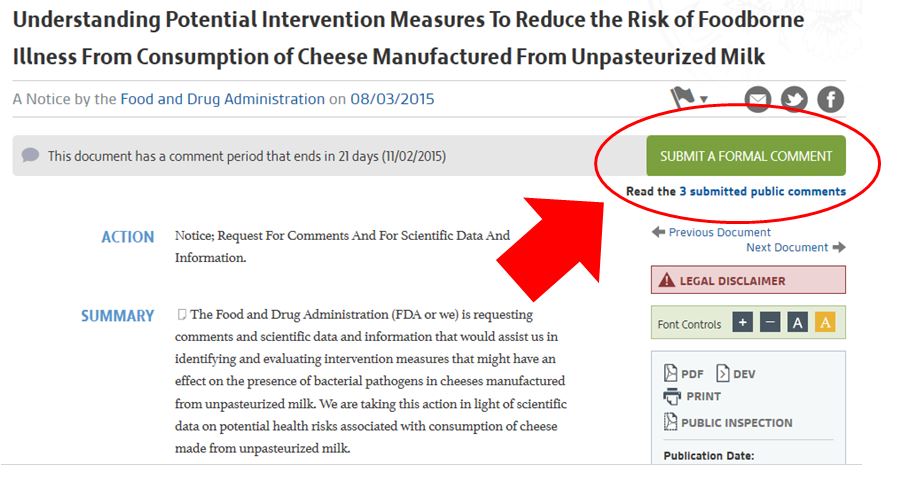Although every month is American Cheese Month at my house, October is officially American Cheese Month. Why October? I have no clue, but your local cheese shop is probably using the opportunity to showcase more domestic selections than usual. Go buy something you’ve never tried.
To do my part, I checked in with Nora Weiser (above) about some of the front-burner issues facing America’s specialty cheesemakers. Weiser is the executive director of the American Cheese Society.
What are the main hot-button issues for your membership? What concerns them most right now?
On the food-safety front, one issue is the ability to keep using traditional cheesemaking practices, including producing cheese with raw milk and aging on wood boards—making sure they can keep doing what they have been doing. Having clear, easy-to-follow guidance from federal and state regulators is an issue, so that it’s clear what standards need to be met.
Cheesemakers want regulations that are based on science, that have a proven ability to enhance public safety. But if these products have a safe track record, why is the FDA focused on them? So many other food categories are implicated in large disease outbreaks that affect many people. So how did soft-ripened cheeses rise to that level? If we’re going to talk about science, we’d like to see that science. Members would like to see where the concerns might be.
How is the relationship between ACS and FDA? What’s working and what’s not?
We are trying to keep lines of communication open. It’s particularly important when issues arise and one side lacks understanding of the other side’s point of view. We’ve asked FDA for clarification on their Hispanic cheese testing program. Can they tell us what they’ll be testing and when they’ll be testing? How are they determining what is “Hispanic style”? Our members like to know so they’re not surprised and are prepared and understand.
FDA is reviewing our “Best Practices Guide” for cheesemakers. It helps the agency understand some of the things cheesemakers do and why. It’s like we’re raising our hand to say, “Hey, don’t forget there are artisan and specialty and farmstead producers that may do things differently than huge dairy producers.” We haven’t gotten comments back yet.
American All-Stars (clockwise from the top left): Rogue River Blue, St. George, Camellia.
Are you anticipating any changes to the regulations in 2016?
The main thing would be changes to raw-milk cheese regulations. FDA has put out a request for data and it’s imperative that people comment. Consumers can submit their concerns, but what FDA is really looking for is the practices that ensure safe raw-milk cheese. If producers have specific information on practices and protocols, that’s incredibly valuable, but a preponderance of consumers expressing concern can’t hurt. The deadline is November 2.
To submit a comment to the FDA, click the green button.
Tomatoes Heart Cheese
No time like the present to make these half-dried tomatoes; the season for plum tomatoes is almost over. Slow-roasted in a low oven, they emerge more succulent and flavorful than the fully-dried commercial varieties. Serve with ricotta, fresh chèvre or aged sheep’s milk cheese and some toasted almonds. From The Cheese Course by Janet Fletcher (Chronicle Books). You’ll find more autumn recipes on my website.
- 6 meaty plum tomatoes, halved lengthwise (about 1 pound)
- 4 teaspoons extra virgin olive oil
- Kosher or sea salt
- 1 teaspoon herbes de Provence
For the almonds:
- 1 cup whole unblanched almonds (about 5 ounces)
- 2 teaspoons extra virgin olive oil
- 1/2 teaspoon Kosher or sea salt
- Ricotta, fresh chèvre or aged sheep’s milk cheese such as Bellwether Farms San Andreas
Prepare the tomatoes: Preheat the oven to 250°F. Put the tomatoes in a non-aluminum baking dish. Drizzle with the olive oil. Season with salt and herbs, crumbling the herbs between your fingers to release their fragrance. Bake until the tomatoes are soft, wrinkled and shrunken but still moist, about 8 hours. Set aside to cool.
Prepare the almonds: Raise the oven temperature to 325°F. Bring a small saucepan of water to a boil over high heat. Add the almonds and blanch 1 minute, then drain. Immediately transfer the nuts to a clean dish towel and wrap the towel around them. Vigorously rub the nuts in the towel to loosen the skins. By hand, remove any skins that don’t come loose; they should peel off easily. Transfer the skinned nuts to a baking sheet. Rub with the olive oil and season with salt. Bake until golden-brown and fragrant, about 30 minutes. Transfer to paper towels to cool.
Serve family style or divide the cheese, tomatoes and almonds among individual plates.
Serves 6




